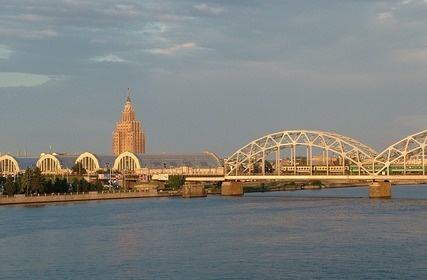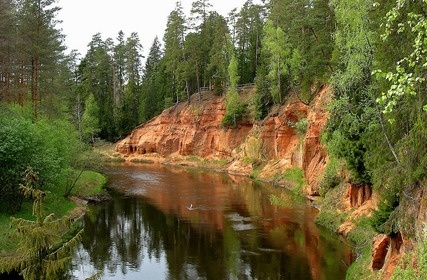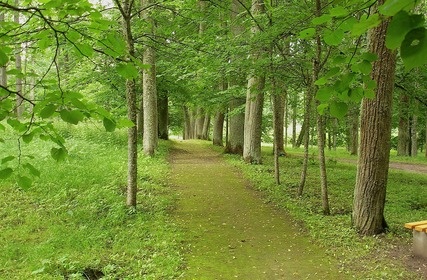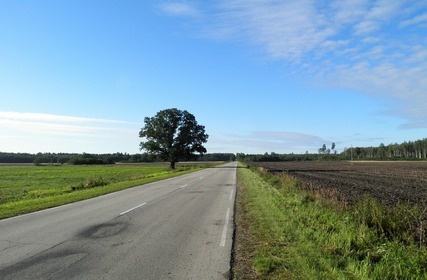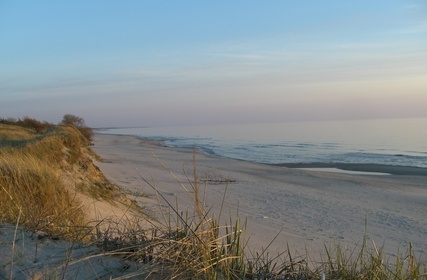Most popular locations in Latvia
-
Daugavpils
-
Sigulda
Located 50 kilometers east of Riga, the city of Sigulda is a picturesque location set at the end of the Gauja Valley.Surrounded by forests, sandstone cliffs and the River Gauja, Sigulda is referred...
-
Riga
Riga is Latvia’s capital and largest city located at the mouth of the River Daugava on the Baltic coast.Whether you visit for a weekend getaway or plan to stay longer to discover the city’s hidden ...
-
Ulbroka
-
Cēsis
-
Mārupes N.
Latvia is one of Europe’s less discovered tourist destinations but with an enviable location on the edge of the Baltic Sea and a landscape of natural beauty that is comprised of river valleys, pine forests and wetlands its worth of a visit.
From the cobblestone streets of Riga’s Old Town, to sunbathing on a Baltic beach or fishing in a remote lake there is enough in this country to satisfy and entertain the fussiest of tourists.
A brief history
Latvia’s geographical location has meant it has played a significant part in intercountry trade routes across the millennia and these snippets of trade have influenced Latvia’s economic and cultural heritage.
Over time, the country has been fought over and ruled by Germans, Polish, Scandinavians, and Russians who ruled many Baltic states including Estonia and part of Lithuania. Various religious wars have also left monumental churches and castles throughout Latvia.
Latvia declared independence in 1991 and was deemed a member of the UN. Today, it is also a member of NATO, the European Union and Council of Europe.
As a nation recovering from the global recession, Latvia offers a budget-friendly destination that is making economic steps with core industry like wood products, metals, agriculture and energy.
When to go
Latvia experiences a moderate climate however weather can remain changeable year round including summer months where you may experience warm days but chilly nights, so it is best to be prepared for most weather conditions.
Peak season is between June and September where you’ll find lively festivals such as Midsummer Celebration, attractions open daily and extended hours for restaurants in conjunction with warm, sunny days. July and August are the hottest months and see a huge increase in tourists to the Baltic Sea beaches.
May is a great month to visit as it is warm and sunny, there are less tourists and hotel prices are not at peak season levels. Latvia experiences an Indian summer from September to early October and nature areas such as the Gauja National Park look particularly beautiful with autumn colors.
In winter months, snow arrives – even in Riga you’ll find a dusting over the Old Town – and travel is more difficult however you can try ice skating or go cross-country skiing.
Getting around
Latvia has just one international airport – Riga International Airport – so overseas tourists will generally start their visit in the capital city.
Bus and train networks are wide spread throughout Latvia and we recommend booking tickets in advance and confirming the closest station names prior to traveling as some destinations may not have an immediate station. Cycling, especially on rural roads, is not advised due to inadequate provision for cycle lanes.
Hiring a rental car is a good option for discovering Latvia’s diverse countryside and attractions. Bear in mind summer months see an increase in traffic, so allow extra time for traveling. Driving in Latvia is an adventure so remain alert at all times!
Meet the locals
Join in at a traditional festival where you’ll experience sublime folk songs (daina). Latvian’s love singing and many belong to choirs or folk dance groups.
Latvian’s have a strong sense of nature and with access to over 700 protected natural areas, reserves and parks you’re bound to meet some locals in the great outdoors. Head to the Latgale region, one of Latvia’s top locations for hiking, lake fishing or canoeing.
Voyage to Jūrmala, a coastal region of Latvia where you can experience the vibe of a Latvian beach resort complete with expansive sandy beach, water sports to entice any lethargic traveller and beachside restaurants offering grilled herring and cold drinks.
Culture & customs
Different cultural and social differences exist between Latvia’s 5 regions including traditional dress, customs, food and music. Many Latvian’s will speak a local dialect as well as Russian.
Latvia celebrates many festivals year round that include singing, art, traditional food and dancing. Mingle with the locals at Easter celebrations, the Jani summer solstice (June), or the Cesis Medieval Festival (August).
Food in Latvia originates from peasant cuisine so rye, wheat, starchy vegetables, smoked meats and fish are staples. Sample classic Latvian food such as rupjmaize (black rye bread), piragi (bacon and onion encased in light dough) or siļķe ar biezpienu (herring with cottage cheese).
Typical Latvian souvenirs to look for at markets or boutiques include amber, silver jewellery, balsam (a herbal liqueur) or smoked ceramics from Latgale.




